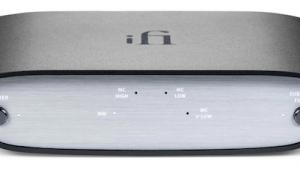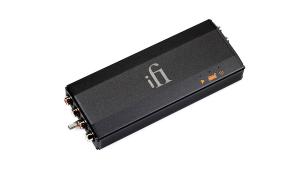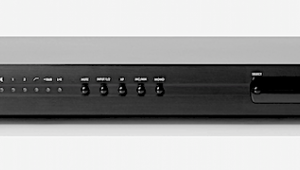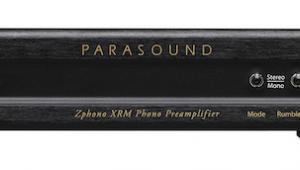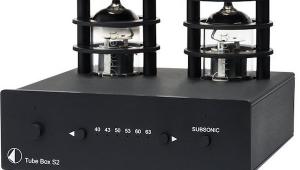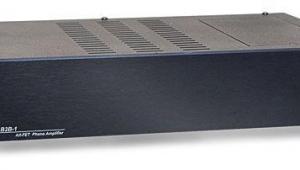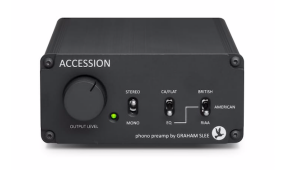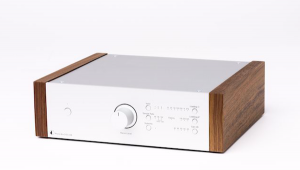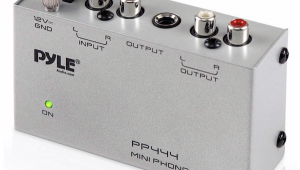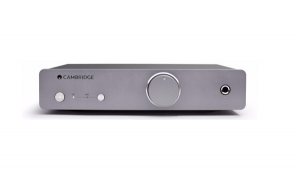CiAudio's Punchy, Pleasing PEQ MKII Dual Mono MM/MC Phono Preamplifier
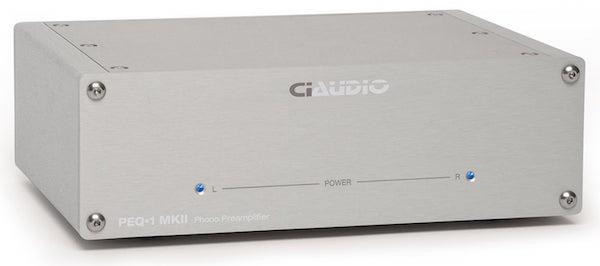
The input gain stage features exterior chassis-accessible dipswitch selectable resistive and capacitive loading, gain and subsonic filter choices. That’s followed by a combination of passive high frequency cut/active bass boost RIAA filter circuitry that connects to the output jacks.
CiAudio claims very short signal path from input to output as well as a combination of star grounded power supply components and audio circuitry ground plane design results both quiet backgrounds and immunity from EMI/RFI. The circuit board is housed within a heavy steel faraday cage to further reject outside noise interference.
Other quality components include Nichicon Muse™ NP power supply capacitors, Vishay™ 2% Polypropylene signal and bypass capacitors, Takman™ metal film & carbon films resistors, and Grayhill™ switches.
The standard power supply includes an unusually robust for the price outboard “Wal-wart” type 14 volt AC output supply transformer with a single winding feeding both left and right dual AC input circuits. The connecting chassis jack and plug are also of a higher quality than is usually found at the $1000 price point. The incoming AC feeds to independent one-per-channel filter/regulation circuits that supply power to the left and right audio stages that the company claims are equivalent to the best battery technologies minus the inconvenience. The back panel also includes a convenient chassis ground lift switch.
An extra-cost ($299) power supply option features a large dual output Toroidal Transformer, AC line filtering and dual common mode choke filtering in a milled aluminum chassis.
I chose to review the basic $995 PEQ 1 MKII. Setting it up was straightforward and with the externally located dip switches, convenient though be sure to have the instruction manual handy because the switches are not identified on the chassis. CiAudio supplies a red dipswitch-friendly pen that helps to move the tiny switches. Don’t lose that either!
Gain is either 45dB (MM) or 60dB (MC, HO MC). Resistive choices are 47k,10K,1K and 100 ohms. Capacitive loading choices are 100pF, 270pF and 370pF. There’s a useful subsonic filter that produces a -3dB cut @18Hz. Output impedance is a usefully low 100 ohms. While the instructions claim “ultra-low noise”, “ultra low harmonic and intermodulation distortion (THD/IMD)” these are not actually spec’d nor are the frequency response or S/N ratio specifications, which would be nice to know but of course the proof is in the listening.
(Designer Dustin Vawter responded: "BTW, THD+N and IMD are listed in the specs, frequency response is defined as RIAA accuracy. Bandwidth is 8-80khz (-3dB). We rate absolute noise rather than S/N ratio as S/N always varies based on cartridge output level and type.Typical ratings are heavily filtered (A weighted) and not very useful. However if you like these ratings, PEQ is over 100dB at low gain and better than 93dB at high gain."
The 8 pound PEQ 1 MKII includes a five years parts and labor warranty. CiAudio has been around for a long time, which is important when considering the value of a “lifetime” warranty. Designer/owner Dustin Vawter has clearly attempted and succeeded in providing excellent American-made value at the $1000 MM/MC phono preamp price point.
Listening
One of the reasons I labeled “for entertainment purposes only” the recent phono preamplifier “shoot out”, was this exceptionally fine sounding phono preamp’s not particularly impressive “blind test” vote. I would have voted the PEQ 1 MKII above some of the others and certainly well above the $399 Music Hall pa 2.2, which though incredibly versatile (MM/MC phono preamp. Line preamp, headphone amp) does not sonically compare to the PEQ 1 MKII, yet the Music Hall got twice as many votes!
Once broken in, I used the PEQ 1 MKII in a variety of setting with numerous turntables and cartridges, most recently with the under review Rega P10 fitted with the .35mV output Rega Apheta 2 cartridge ($6695 for the package)—but only after a few weeks first using the $1495 Rega Aria MM/MC phono preamp.
The Aria produced a darker, richer overall sonic picture compared to the PEQ 1 MKII, which though not at all bright was somewhat leaner and one could argue “cleaner” in the mid bass. The Aria’s attack was somewhat softer and it’s sustain and decay were more generous than the CiAudio’s but the CiAudio’s overall sonic performance was more transparent, letting you see further into the soundstage, and its attack was faster and cleaner.
For instance, on the limited edition Berliner Direct to Disc recording Katie Mahan plays Gershwin (BMS 1706 V), while the piano was richer sounding through the Aria and the longer sustain and decay produced more of the studio room sound, it was also darker sounding and the piano was more difficult to “see” in the space.
The PEQ 1 MKII produced a faster, better-delineated piano attack, particularly on the upper end of the piano where the high notes also had what I thought greater timbral accuracy. This translated into snappier overall rhythm’n’pacing compared to the Aria, though at the expense of the instrument’s richness on the lower keys.
The PEQ 1 MKII also produced a more solid image of the piano itself set in relief against the room acoustics.
The just reviewed Saft/Swallow/Previte/Pop Rare Noise release loneliness road also pointed out these differences. I thought Steve Swallow’s electric bass lines were tauter and better controlled through the PEQ 1 MK II without losing any of the bottom end extension, which through both was very good. The record’s spectacular cymbal, kick drum and tom sound were well-displayed by both phono preamps but again, I preferred the PEQ 1 MKII’s speed and transparency on top and bottom.
The PEQ 1 MKII’s overall personality may give up some sustain/decay but that’s made up for by its excellent image focus, stability and rock-solid three-dimensionality. The Aria gives up some there but gives you more supple attack and generous sustain. Which you might prefer is of course system and taste dependent.
What most impressed me about the PEQ 1 MKII was its extended, open but definitely not etched top end and its lack of unpleasant additive mechanical/non-musical artifacts. The pleasingly fast, snappy attack and overall transparency well-illuminated the space just outside of Bernie Grundman’s mastering room, which was used for the Anne Bisson Trio’s Direct to Disc Four Seasons in Jazz Live at Bernie’s (BMS-DD 101-45) a double 45rpm set. Ms. Bisson is well-known to many audio show attendees where she sometimes entertains and sells her records and CDs.
Give her credit for attempting (and pulling off) the most difficult of recording assignments playing piano and singing direct to disc. This task freezes many an experienced performer and it must be done without auto-tune or other “fix it in the mix” cover-ups.
The music is more middle of the road cabaret or piano bar fare than jazz, with Ms. Bisson’s fresh, breezy style covering standards like Seals and Crofts’ “Summer Breeze”, “September Song” and Freddie Hubbard’s “Up Jumped Spring” along with some Bisson originals. This makes for refreshingly entertaining but hardly challenging fare, which is fine.
The recording engineered by Michael C. Ross is “you are there” transparent and three-dimensional. It brings out all of the PEQ 1 MK II’s virtues, particularly its mid-band transparency where the spotlight on Bisson’s voice was just right. She appeared well-illuminated center stage, vocal cord textures intact, though further forward on the stage than through the Aria, which again produced a somewhat richer piano sound and pushed back on the stage the vocal image, which was also somewhat rounder and more supple.
In some systems and to some ears the PEQ 1 MKII might seem a bit threadbare compared to the Aria’s midband richness, but again in my system and with the Rega Apheta 2 (which is a huge improvement over the mechanical-sounding original MC from Rega), on most music I found the PEQ 1 MKII more to my sonic liking.
Its punchy dynamic performance was another plus especially for rock and jazz, while for classical I preferred the Aria’s richer, more burnished overall character.
The good news is that both of these and a few others priced well under $2000 can produce satisfying sonics through a far more costly system than in which either is likely to be asked to perform.
Conclusion
The CiAudio PEQ 1 MKII is not your only choice at the circa $1000 price point but among the ones covered in our recent survey as a stand-alone MC phono preamp, it was my second favorite, bettered only by the far more expensive Lehmann Silver Cube. The CiAudio PEQ 1 MKII excelled at imaging and soundstaging as well as at producing overall transparency and rhythmic tautness, particularly in the bass. It might be too lean for some in the midrange and especially upper bass area but not for me. The PEQ 1 MKII’s clarity and authority in that mid-bass region is what made me most want to listen to it even if it leaned out a bit above that.
The highest compliment I can pay the CiAudio PEQ 1 MKII is that it sounds as if its creator actually listened as he designed instead of just measuring. This is a fun to listen to, non-mechanical sounding phono preamplifier that delivers genuine musical pleasure and performs well beyond its pay grade.





